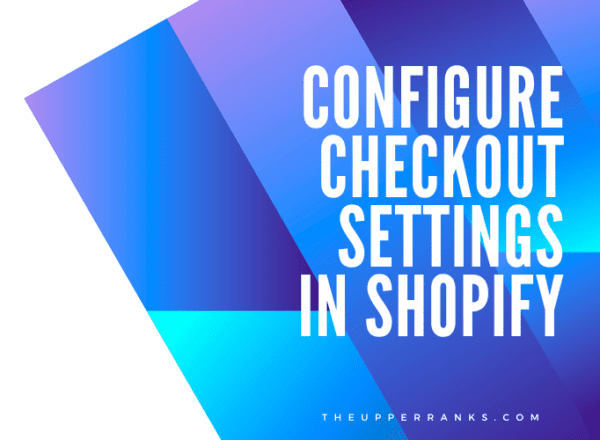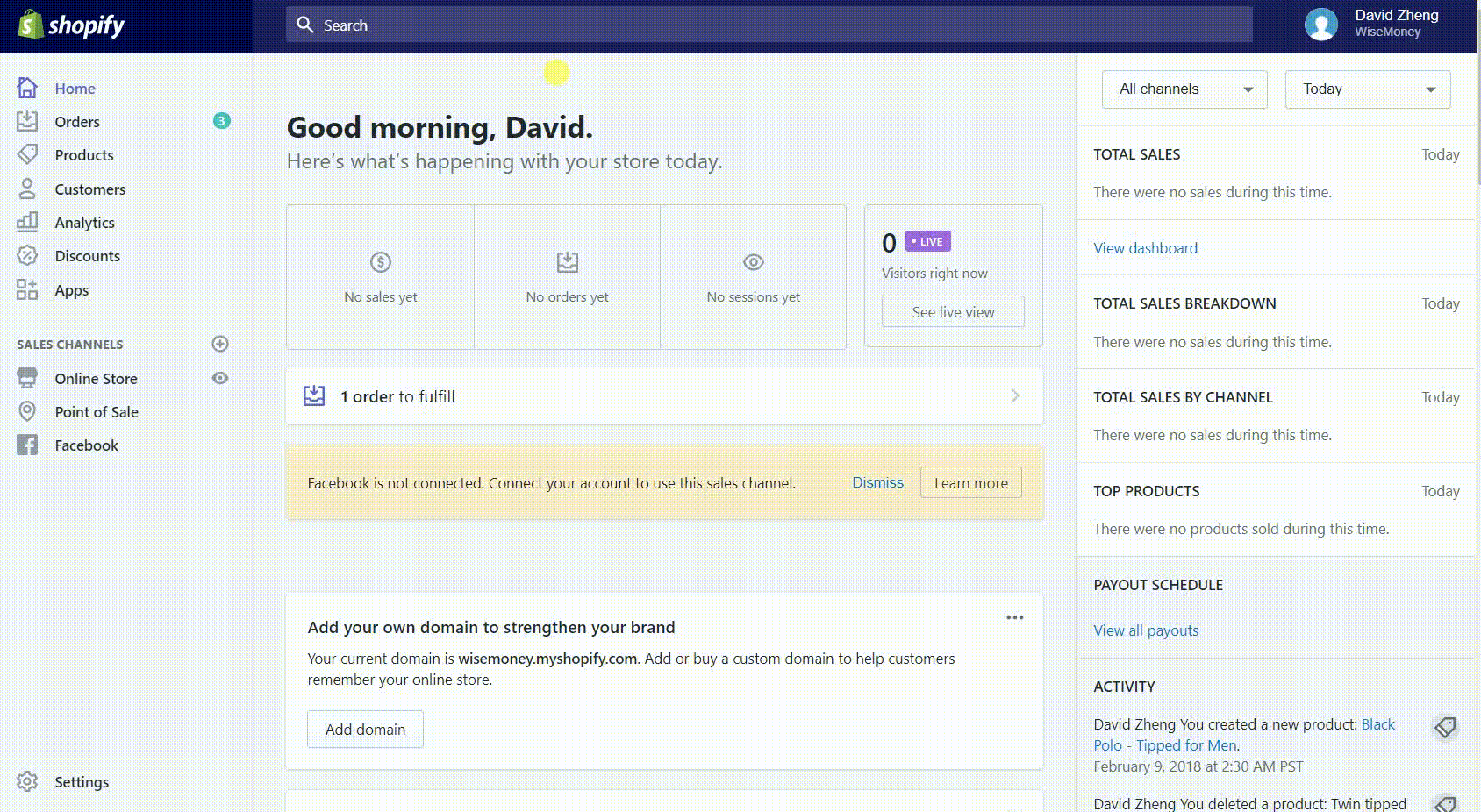Are you looking to set up a streamlined checkout process in order to maximize your conversion?
Dependent upon the type of business that you are running, the customer checkout experience will vary. However, something crucial to understand, no matter your business model, is to remove the roadblocks that could be preventing your customers from checking out.
Are you requiring your customer to have an account?
More importantly, should you be?
Either way, you could be creating stumbling blocks for your customer to complete the sale.
Think about it, and what you want. Really the question is: does your customer need an account, and if not, why would you require one?
Here is how to see what customer account configurations you have currently set up, and a quick “how to” on changing them.
Step #1: Go to your Shopify admin and click on “Settings”
Step #2: Now click “Checkout”
Step #3: Locate the “Customer accounts” panel, it will be the second section under “Checkout”
Step #4: Choose between the three customer account options:
Accounts are disabled: Customers will not be able to create an account on the site or login. Instead, they will have to manually enter in their information to complete checkout.
Accounts are required: Customers will be required to create their accounts in the store before placing any orders on the checkout page.
Accounts are optional: If this option is selected then the customers can choose whether they want to create an account or not before completing the checkout process.
Step #5: Be sure to click the “Save” button once you have implemented any changes.
Now you know the difference between the three check out options, and the way customers interact with them. It is time to decide what check out would best leverage your sales and increase your conversion.
Every business is different, but a good rule of thumb, is the less times you make a customer think about buying something, the more likely they are to complete the transaction.
Tips to Maximize Conversions with a Streamlined Checkout Process
- Offer a guest checkout option: While offering customer accounts can be helpful for repeat customers, requiring account creation during checkout can add unnecessary friction and cause cart abandonment. Consider offering a guest checkout option to make the process as easy as possible.
- Keep forms short and simple: Only ask for the essential information you need to process the order. Long and complex forms can lead to customer frustration and abandonment.
- Provide clear and transparent pricing: Make sure that all costs, including taxes, shipping, and handling fees, are clearly displayed upfront. Surprise charges during checkout can lead to cart abandonment and customer dissatisfaction.
- Offer multiple payment options: Customers have different preferences when it comes to payment methods, so offering a variety of options can increase the likelihood of completing the transaction. Common payment methods include credit cards, PayPal, and Apple Pay.
- Optimize for mobile: More and more customers are shopping on their mobile devices, so it’s essential to ensure that your checkout process is mobile-friendly and optimized for smaller screens.
- Use progress indicators: Displaying a progress indicator during checkout can help customers understand where they are in the process and how much longer it will take to complete the transaction.
- Use trust badges and security symbols: Including trust badges and security symbols such as SSL certificates can help increase customer trust and confidence in your checkout process.
- Use exit-intent pop-ups: If a customer attempts to leave the checkout page without completing the transaction, consider using an exit-intent pop-up to offer a discount or incentive to encourage them to complete the purchase.
- Use social proof: Displaying customer reviews and ratings can help build trust and increase the perceived value of your products or services.
By implementing these best practices, you can create a checkout process that is user-friendly and optimized for conversions.


Comments